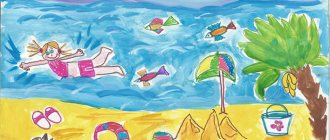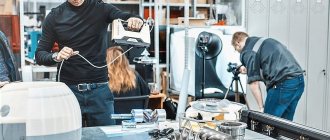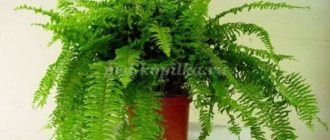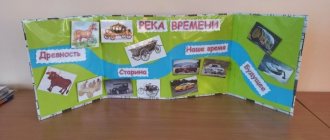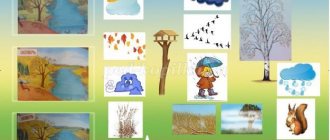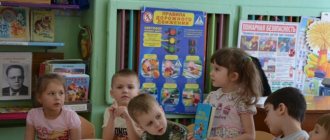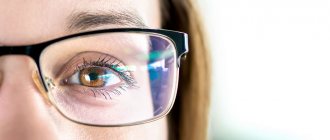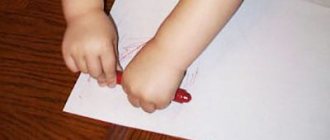Information and creative project in the middle group “Golden Autumn”
And he growls at us"
The bear catches the children with a growl, the children run away.
"Leaf Fall"
In a group there are 3-4 hoops on the floor - these are puddles. Next to each of them is a picture of a tree: birch, oak, rowan, maple. Children have the leaves of these trees.
Leaf fall, leaf fall, alternately waving your arms,
Yellow leaves are flying, with both hands,
They rustle underfoot and crouch,
And they fly, fly, fly... circle and sit down.
At a signal, children - “leaves” fly, wherever they want, at another signal they must gather at their tree, whose team is faster. “Which tree are you from? (From a maple tree.) So, what kind of leaves are you? (Maple.)". Then the “leaves” fly again, lie on the ground, and “fall asleep.” Pictures of trees change places.
"Sun and Rain"
Objectives: to teach children to walk and run in all directions, without bumping into each other, to teach them to act on the teacher’s signal.
Description. Children squat down behind the line designated by the teacher. The teacher says: “The sun is in the sky! You can go for a walk." Children are running around the playground. To the signal: “Rain! Hurry home! — run behind the marked line and squat down. The teacher says again: “Sunny! Go for a walk,” and the game repeats.
"Shaggy Dog"
Objectives: teach children to move in accordance with the text, quickly change the direction of movement, run, trying not to get caught by the catcher and without pushing.
Description. Children stand on one side of the playground. One child on the opposite side portrays a “dog”. The children quietly approach him, and the teacher at this time says:
Here lies a shaggy dog,
With your nose buried in your paws,
Quietly, quietly he lies,
He's either dozing or sleeping.
Let's go to him and wake him up
And let’s see: “Will something happen?”
Children approach the "dog". As soon as the teacher finishes reading the poem, the “dog” jumps up and “barks” loudly. The children run away, the “dog” tries to catch someone. When all the children hide, the “dog” returns to its place.
"The Birds Are Flying"
Objectives: teach children to jump from low objects, run in all directions, act only on a signal; teach kids to help each other.
Children stand on a small elevation - a board, cubes, bars (height 5-10 cm) - on one side of the playground. The teacher says: “The sun is shining outside, all the birds are flying out of their nests, looking for grains and crumbs.” Children jump from heights, “fly” (run, waving their arms - “wings”), squat, “peck” grains (knock their fingers on the ground). With the words of the teacher: “It’s raining! All the birds hid in their nests!” - the children run to their places. Before the game, the teacher must prepare low benches or such a number of cubes and bars that there is enough for everyone who wants to play. They should be located on one side of the playground at a sufficient distance from each other so that the children do not jostle and can freely take their places. We need to show children how to jump off softly and help them rise to a higher ground after running. When repeating the game, the signal can be given in one word: “Sunny!” or “Rain!” Children need to know what signal to do what.
Project with children of the middle group on ecology “Why do the leaves turn yellow and fall?”
Project with middle group children on the topic:
“Why the leaves turn yellow and fall off in the fall.”
Type of project: group, short-term, research and creative, aimed at studying nature in the autumn with seasonal changes.
Project participants: middle group children (4-5 years old).
Duration: from November 1 to November 15, 2022
Relevance of the project:
Every autumn day there are fewer and fewer leaves on the trees, and children during a day walk ask why this is happening and why they turn yellow.
In the middle group of kindergarten, we must create conditions for the formation of children's interest in nature. Encourage curiosity when exploring the natural world. Create conditions for organizing children's experimentation with natural materials. Encourage children's initiative in exploring objects and natural phenomena. Support the manifestations of children's research activity. Learn to establish connections between objects and phenomena and make simple generalizations. To cultivate a caring attitude towards nature, to love it, to form the simplest environmental ideas. Teach children to notice seasonal changes in nature in the autumn.
Formulation of the problem:
Children do not have enough ideas about objects and natural phenomena, about the correct attitude towards the natural world around them, about interaction with it.
While walking, children often ask why the leaves on the trees turn yellow and fall off? We answered, if children want to learn about this, then we need to study it.
We used a three question model:
- What do I know?
-What do I want to know?
-How to find out?
Objective of the project:
To form children's knowledge that winter is coming soon, trees are beginning to prepare for hibernation.
Tasks:
Deepen your understanding of changes in nature in the fall, that there is less sun and less chlorophyll is released, in the fall trees get rid of harmful substances, which is why they shed their leaves. And in the fall, trees are saved from drying out and from death; a special detachable layer is formed at the petiole.
Methods and forms of work:
artistic and productive activities, reading fiction, gaming and leisure activities.
Expected Result:
Deepening and expanding children's knowledge about autumn changes in nature, leaf fall, and how trees prepare for hibernation.
Activation of vocabulary, development of coherent speech and spatial orientation.
Development of all mental processes.
Development of creative abilities.
Project product:
Exhibition of drawings on the theme "Fairytale Tree", "Golden Autumn".
Long-term work plan for the project:
| Types of children's activities | Methods, techniques |
| Artistically productive | Application “Basket of mushrooms” Modeling “Plums and Lemons” Drawing “Fairytale tree”, “Golden autumn” |
| Cognitive activity | Reading fiction: “Bunin I.A. “The sky was already breathing in autumn”, M. Prishvin “Already the sky was breathing in autumn”, T. Skribitsky “Autumn”. Learning by heart: M. Prishvin “Autumn Leaves.” Examination of I. Levitan’s painting “Golden Autumn”. Compiling a descriptive story according to the “Autumn” scheme Herbarium design with autumn leaves. |
| Play activity | Outdoor game "Find a pair." Didactic game “Which tree is the leaf from?” Role-playing game "Vegetable shop" |
| Leisure activities | Matinee dedicated to autumn. |
Stages of work on the project:
| Stages | |
| Preparatory stage | Drawing up a plan for collaboration. Selection of materials and equipment for classes, conversations and games with children. Determining the content of the activities of all project participants. |
| Main stage | Determining the source of information. Determining ways to collect and analyze information. Determine how to present results. Establishing procedures and criteria for evaluating results and process. Distribution of tasks and responsibilities among group members. Reading fiction, watching a presentation on the topic: “Autumn.” Conducting didactic games. Carrying out a matinee dedicated to the autumn holiday. |
| The final stage | Designing an applique exhibition with children on the theme: “Basket of Mushrooms”, an exhibition of drawings on the theme: “Fairytale Tree”, “Golden Autumn”. |
Project performance:
The goal of the project activity was to expand and systematize children's knowledge about autumn changes in nature, how trees prepare for winter hibernation. Therefore, our product was an exhibition of children’s works on the theme “Fairytale Tree” and “Golden Autumn”. Thanks to the project, the children became acquainted with a variety of educational games, became acquainted with the more detailed structure of a leaf through a magnifying glass, learned many autumn songs and poems, became acquainted with fiction, where autumn signs were fixed.
Perspective: Children have a desire to also get acquainted with another season in winter, which will enrich their knowledge about seasonal changes in nature and will contribute to a sustainable cognitive interest in learning new things, learning poems and songs.
Literature:
1.Golitsyna N.S. “Environmental education of preschool children. Long-term planning of work with children 3-7 years old.” Methodical manual M: Mosaic-Synthesis 2006.
2.Ivanova A.I. "Living ecology. Environmental education programs for preschool children" TC Sfera. 2009.
3.Kolomina N.V. “Education of the fundamentals of environmental culture in kindergarten. Lesson scenario "M.TC Sfera. 2005.
PHOTO REPORT:
Examining the structure of a leaf under a magnifying glass.
Household work on the kindergarten site with children's equipment.
Games with leaves.
